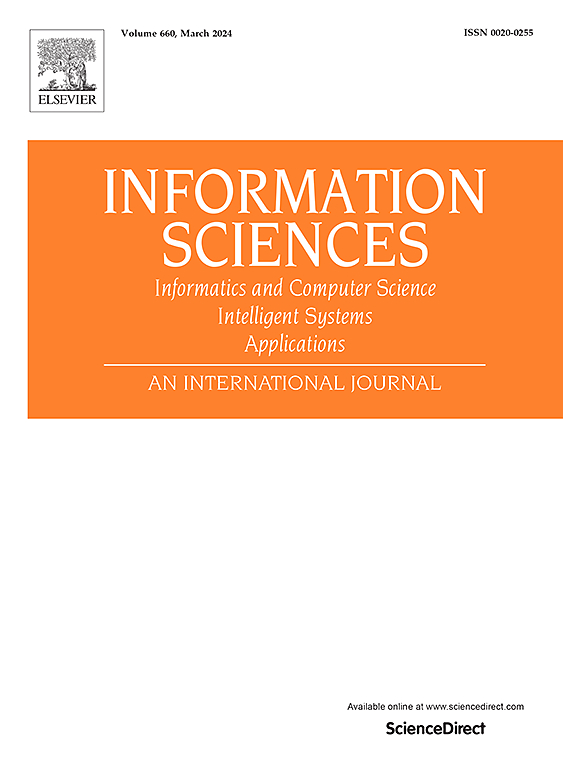Adaptive event-triggered obstacle avoidance control for unmanned vehicles via distance-velocity barrier functions
IF 8.1
1区 计算机科学
0 COMPUTER SCIENCE, INFORMATION SYSTEMS
引用次数: 0
Abstract
This article investigates the event-triggered obstacle avoidance control problem for unmanned vehicles subject to velocity constraints. The existing barrier functions rely solely on the distance between the vehicle and the obstacle, which may cause the vehicle to unnecessarily evade (non-threatening) obstacles that are within the sensing range but are moving away at an increasing distance. To mitigate this conservatism, a novel distance-velocity barrier function is designed, which is introduced with the relative position and relative velocity between the vehicle and the obstacle as one of its conditions, thereby avoiding the vehicle perceiving these non-threatening obstacles. Furthermore, the issue of non-differentiable barrier functions caused by relative position and relative velocity is addressed through a second-order filter. Secondly, unlike the traditional fixed threshold, relative threshold, and switching threshold-triggered mechanisms that solely depend on control signals, we design an event-triggered mechanism based on velocity constraint functions to conserve communication resources, and its triggering interval decreases as the velocity increases. Through the Lyapunov method and boundedness analysis for the barrier functions, it is shown that the protocol achieves obstacle avoidance for the unmanned vehicle without violating the velocity constraints, while excluding the Zeno behavior. Numerical simulations are presented to demonstrate the efficacy of the proposed control strategy.
求助全文
约1分钟内获得全文
求助全文
来源期刊

Information Sciences
工程技术-计算机:信息系统
CiteScore
14.00
自引率
17.30%
发文量
1322
审稿时长
10.4 months
期刊介绍:
Informatics and Computer Science Intelligent Systems Applications is an esteemed international journal that focuses on publishing original and creative research findings in the field of information sciences. We also feature a limited number of timely tutorial and surveying contributions.
Our journal aims to cater to a diverse audience, including researchers, developers, managers, strategic planners, graduate students, and anyone interested in staying up-to-date with cutting-edge research in information science, knowledge engineering, and intelligent systems. While readers are expected to share a common interest in information science, they come from varying backgrounds such as engineering, mathematics, statistics, physics, computer science, cell biology, molecular biology, management science, cognitive science, neurobiology, behavioral sciences, and biochemistry.
 求助内容:
求助内容: 应助结果提醒方式:
应助结果提醒方式:


